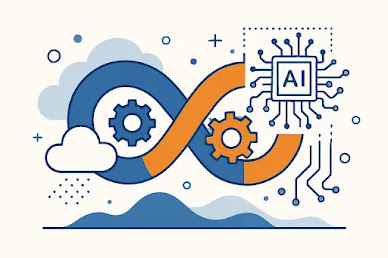As the DevOps community in Singapore celebrates a significant milestone, the 10th anniversary of DevOpsDays Singapore, this year's event brought together over attendees for two days of insightful discussions, workshops, and networking opportunities. Held on May 14-15, 2025, at the Stephen Riady Auditorium @ NTUC, the conference centered around the theme "DevOps Meets AI: Transforming Engineering with Generative AI Tools."
This landmark edition marked a decade of DevOps evolution in Singapore, bringing back the workshop track to commemorate the occasion. The event, organized in partnership with TTAB (Tech Talent Assembly), an association for ICT professionals in Singapore, offered a comprehensive exploration of how artificial intelligence is reshaping DevOps practices and engineering workflows.
In this blog post, I'll take you through the highlights of DevOpsDays Singapore 2025, covering the keynotes, expert talks, workshops, and open space discussions that made this anniversary edition particularly memorable. From AI-savvy operating models to practical implementations of AI agents, the conference provided valuable insights into the intersection of DevOps and artificial intelligence, addressing both the opportunities and challenges in this rapidly evolving landscape.
The integration of DevOps and AI was a central theme throughout the conference
Personally this was also a reunion with my good friend Santosh Dhuraij, and of course beautiful SIngapore.
DevOpsDays Singapore 2025 – Where DevOps Meets AI
The first day of DevOpsDays Singapore 2025 began with an enthusiastic welcome address by Desmond Tan,Deputy Secretary General, NTUC. Senior Minister of State, Prime Minister’s Office setting the stage for the anniversary celebration and introducing the conference theme. Tan highlighted the significance of reaching the 10-year milestone and emphasized how the return of the workshop track would provide hands-on learning opportunities for attendees.
The 10th edition of DevOpsDays Singapore was more than a milestone celebration — it marked a pivotal shift from traditional DevOps practices to the strategic integration of artificial intelligence across engineering workflows.
AI as a Strategic Force in DevOps
A recurring theme throughout the event was how AI is no longer just another tool but a fundamental force reshaping DevOps at the organizational level. The message was clear: effective AI adoption requires a rethinking of how teams are structured, how work flows, and how decisions are made.
Rather than rushing into advanced automation or agentic AI, speakers emphasized the importance of building a strong foundation — including high-quality data, responsible governance, and cross-functional collaboration. Organizations need to evolve from static operating models to AI-aware, continuously adaptive structures.
Prompt Engineering and LLMs: Emerging Skills for Engineers
With the rise of generative AI, prompt engineering was positioned as a core capability for future DevOps professionals. Hands-on workshops showed how to craft effective prompts for large language models (LLMs), using techniques like few-shot learning and chain-of-thought prompting.
Beyond prompts, sessions also explored how to build production-grade LLM applications using retrieval-augmented generation (RAG), vector databases, and observability patterns. The focus was on turning LLM prototypes into reliable, maintainable services integrated into real-world DevOps pipelines.
DevSecOps in the Age of AI
AI is transforming DevSecOps by both introducing new tools and creating new risks. On the one hand, machine learning enhances vulnerability detection, compliance checks, and threat modeling. On the other hand, AI-generated code, autonomous agents, and model hallucinations introduce new attack surfaces.
Security-focused sessions, including interactive workshops, reinforced the need for security-by-design in environments where AI is embedded deeply in workflows. As DevOps shifts left, security must keep pace.
On-Prem and Edge AI: Beyond the Cloud
While much of the AI conversation centers around cloud platforms, several talks focused on scenarios where internet access is limited or prohibited — such as defense, healthcare, or financial services. Presenters shared techniques for deploying AI systems in air-gapped environments, including offline model updates and secure data pipelines.
Edge AI was another focal point, with lightweight Kubernetes distributions enabling inference and decision-making close to data sources. These solutions are critical for real-time, low-latency AI workloads in constrained environments.
Infrastructure for AI Workloads
Supporting AI means rethinking infrastructure. From smart Kubernetes resource management using predictive algorithms to scalable distributed storage using Ceph, the sessions underscored that platform engineering must adapt to AI’s unique demands.
Infrastructure-as-code practices were also revisited — showcasing how tools like Terraform and AWS CDK can be combined using AI to streamline infrastructure provisioning and improve security configurations.
Community-Driven Collaboration and Open Spaces
True to the DevOpsDays spirit, open space discussions provided some of the most dynamic and relevant exchanges. These sessions reaffirmed the maturity and collaborative nature of the DevOps community in Singapore — curious, hands-on, and willing to tackle emerging challenges together.
Final Reflections
DevOpsDays Singapore 2025 wasn’t just a celebration of the past 10 years — it was a blueprint for what’s next. The convergence of DevOps and AI is already happening, and this community is leading the charge with a combination of strategic vision and practical experimentation. The future of DevOps is not just faster and more secure — it’s smarter.
As DevOpsDays Singapore looks ahead to its next decade, the 2025 edition demonstrated that the community remains vibrant, engaged, and committed to sharing knowledge and advancing practices. The integration of AI into DevOps represents both a challenge and an opportunity—one that the Singapore DevOps community is well-positioned to navigate based on the insights and connections fostered at this milestone event.
For those who couldn't attend or who want to revisit the content, many of the presentations and workshop materials will probably be available on the DevOpsDays Singapore website in the coming weeks. The conversations started at the conference will continue in local meetups and online communities, ensuring that the learning and collaboration extend well beyond these two days in May 2025. I sure hope to be there in 2026. Together with Santosh, we finalized the day with a visit to Zuhlke Engineering, to follow some interesting lectures around security, before I took off to the Netherlands again.
Thanks to all the organizers and in special Sergiu Bodu!






.png)
